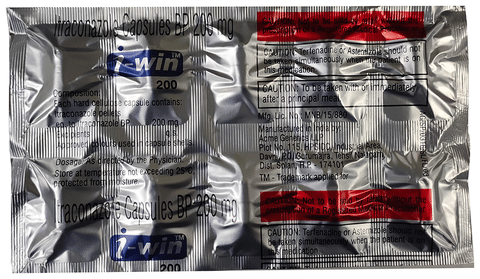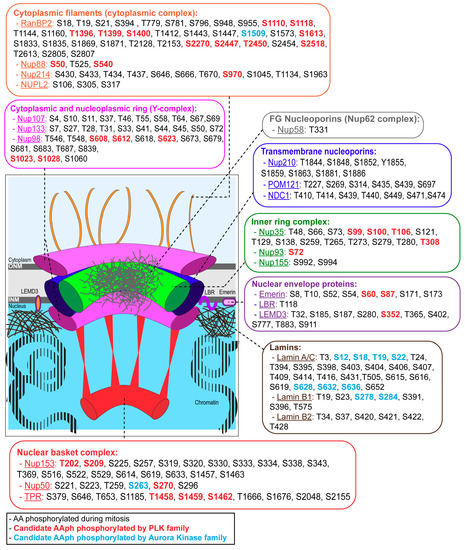Trong bài viết này, chúng ta sẽ khám phá sâu về https://789win.it.com/, một nền tảng giải trí trực tuyến đang ngày càng phổ biến với hàng loạt tính năng hấp dẫn, giúp người dùng trải nghiệm những trò chơi và dịch vụ chất lượng cao. Với sự kết hợp giữa công nghệ hiện đại và nội dung đa dạng, https://789win.it.com/ không chỉ là địa chỉ cho những ai yêu thích cá cược mà còn là nơi để thư giãn và khám phá các cơ hội mới.
Giới thiệu về https://789win.it.com/
https://789win.it.com/ là một trong những nền tảng giải trí trực tuyến nổi bật, mang đến cho người dùng sự kết hợp hoàn hảo giữa công nghệ và giải trí. Nền tảng này không chỉ tập trung vào các trò chơi cá cược mà còn mở rộng sang nhiều lĩnh vực khác, tạo nên một hệ sinh thái đa dạng. Với giao diện thân thiện và các tính năng bảo mật cao, https://789win.it.com/ đã thu hút hàng triệu người dùng trên toàn cầu, đặc biệt là tại khu vực châu Á.
Lịch sử phát triển và sứ mệnh của nền tảng
https://789win.it.com/ ra đời từ ý tưởng mang đến một không gian giải trí an toàn và công bằng cho mọi người. Ban đầu, nền tảng này được xây dựng bởi một nhóm các chuyên gia công nghệ và chuyên gia giải trí, với mục tiêu khắc phục những hạn chế của các trang web cá cược truyền thống. Họ đã đầu tư mạnh mẽ vào công nghệ bảo mật, đảm bảo rằng mọi giao dịch và dữ liệu cá nhân đều được bảo vệ chặt chẽ. Điều này không chỉ giúp nâng cao uy tín mà còn tạo dựng lòng tin từ cộng đồng người dùng.
Qua nhiều năm phát triển, https://789win.it.com/ đã mở rộng quy mô, hợp tác với các nhà cung cấp trò chơi hàng đầu thế giới như Microgaming và NetEnt. Sứ mệnh cốt lõi của nền tảng là mang đến trải nghiệm giải trí chất lượng cao, đồng thời thúc đẩy trách nhiệm xã hội bằng cách khuyến khích người dùng chơi có trách nhiệm. Ví dụ, họ đã tích hợp các công cụ kiểm soát như giới hạn đặt cược và thời gian chơi, giúp giảm thiểu rủi ro nghiện ngập. Điều này thể hiện cam kết lâu dài của https://789win.it.com/ trong việc xây dựng một cộng đồng lành mạnh và bền vững.
Hơn nữa, sự phát triển của https://789win.it.com/ còn phản ánh xu hướng chung của ngành giải trí trực tuyến, nơi mà công nghệ di động và trí tuệ nhân tạo đang đóng vai trò quan trọng. Từ một trang web đơn giản, nó đã trở thành một hệ thống phức tạp với ứng dụng di động, tích hợp thanh toán nhanh chóng và các chương trình khuyến mãi hấp dẫn. Người dùng không chỉ chơi để giải trí mà còn có cơ hội học hỏi và phát triển kỹ năng cá nhân thông qua các trò chơi giáo dục được tích hợp.
Các đối tượng mục tiêu và lợi thế cạnh tranh
https://789win.it.com/ hướng đến nhiều đối tượng khác nhau, từ những người chơi mới đến các cao thủ kỳ cựu. Đối với người mới, nền tảng cung cấp hướng dẫn chi tiết và các trò chơi cơ bản để làm quen, giúp họ dễ dàng tham gia mà không cảm thấy bị choáng ngợp. Trong khi đó, những người chơi chuyên nghiệp sẽ đánh giá cao các tính năng nâng cao như phân tích dữ liệu thời gian thực và các giải đấu lớn với phần thưởng hấp dẫn. Lợi thế cạnh tranh lớn nhất của https://789win.it.com/ nằm ở sự đa dạng của nội dung, với hơn 500 trò chơi từ casino trực tuyến đến thể thao điện tử.
Một điểm nổi bật khác là hệ thống hỗ trợ khách hàng 24/7, giúp giải quyết nhanh chóng mọi vấn đề mà người dùng gặp phải. So với các đối thủ, https://789win.it.com/ nổi bật nhờ tích hợp công nghệ blockchain cho các giao dịch minh bạch, giảm thiểu rủi ro gian lận. Điều này không chỉ tăng cường niềm tin mà còn tạo ra một môi trường công bằng, nơi mọi người đều có cơ hội chiến thắng như nhau. Ví dụ, trong các trò chơi roulette hoặc blackjack, hệ thống sử dụng các thuật toán ngẫu nhiên được kiểm chứng độc lập, đảm bảo tính trung thực tuyệt đối.
Bên cạnh đó, https://789win.it.com/ còn tận dụng mạng xã hội để xây dựng cộng đồng, với các nhóm thảo luận và sự kiện trực tuyến. Điều này giúp người dùng kết nối, chia sẻ kinh nghiệm và thậm chí hợp tác trong các trò chơi nhóm. Tổng thể, lợi thế cạnh tranh của nền tảng nằm ở khả năng thích ứng với xu hướng mới, như tích hợp thực tế ảo (VR) cho các trải nghiệm chơi game sống động hơn, giúp nó luôn dẫn đầu trong ngành công nghiệp giải trí.
Tác động của https://789win.it.com/ đến ngành giải trí
Sự xuất hiện của https://789win.it.com/ đã tạo nên một cuộc cách mạng trong ngành giải trí trực tuyến, thúc đẩy sự cạnh tranh và đổi mới. Nền tảng này không chỉ mang lại doanh thu khổng lồ mà còn góp phần tạo việc làm cho hàng ngàn lập trình viên và chuyên gia phân tích. Ở một khía cạnh rộng hơn, nó đã thay đổi cách mọi người tiếp cận giải trí, từ việc đến sòng bạc truyền thống sang trải nghiệm tại nhà qua thiết bị di động. Điều này đặc biệt quan trọng trong bối cảnh đại dịch, khi mọi người cần các hoạt động giải trí an toàn.
Ngoài ra, https://789win.it.com/ đã hợp tác với các tổ chức từ thiện, sử dụng một phần lợi nhuận để hỗ trợ các chương trình xã hội, chẳng hạn như giáo dục và sức khỏe cộng đồng. Điều này giúp nền tảng không chỉ là một doanh nghiệp mà còn là một phần của sự phát triển bền vững. Người dùng có thể thấy rõ tác động này qua các chiến dịch quảng bá, nơi họ được khuyến khích tham gia các hoạt động từ thiện để nhận thưởng.
Tóm lại, https://789win.it.com/ đang định hình lại ngành giải trí bằng cách kết hợp công nghệ tiên tiến với trách nhiệm xã hội, mang đến giá trị lâu dài cho cả người dùng và cộng đồng.
Các tính năng nổi bật của https://789win.it.com/
https://789win.it.com/ nổi bật nhờ bộ tính năng đa dạng và hiện đại, giúp nâng tầm trải nghiệm người dùng lên một cấp độ mới. Từ giao diện thân thiện đến các công cụ hỗ trợ tiên tiến, nền tảng này không ngừng cải tiến để đáp ứng nhu cầu ngày càng cao của cộng đồng. Điều này làm cho https://789win.it.com/ trở thành lựa chọn hàng đầu cho những ai muốn kết hợp giải trí với sự tiện lợi.
Giao diện người dùng và thiết kế thân thiện
https://789win.it.com/ sở hữu giao diện hiện đại, dễ sử dụng ngay từ lần đầu truy cập. Thiết kế được tối ưu hóa cho cả máy tính và thiết bị di động, giúp người dùng dễ dàng điều hướng giữa các phần. Ví dụ, menu chính được sắp xếp hợp lý, với các nút truy cập nhanh đến các trò chơi phổ biến, giúp tiết kiệm thời gian và tăng cường sự hấp dẫn.
Hơn nữa, giao diện của https://789win.it.com/ hỗ trợ nhiều ngôn ngữ, bao gồm tiếng Việt, giúp người dùng địa phương cảm thấy thoải mái hơn. Các yếu tố đồ họa sống động, kết hợp với hiệu ứng âm thanh chất lượng cao, tạo nên một không gian giải trí giống như sòng bạc thực thụ. Điều này không chỉ giữ chân người dùng mà còn khuyến khích họ khám phá thêm các tính năng mới. Người dùng có thể tùy chỉnh giao diện theo sở thích, như thay đổi chủ đề hoặc kích thước chữ, để có trải nghiệm cá nhân hóa.
Ngoài ra, hệ thống tìm kiếm thông minh của https://789win.it.com/ cho phép lọc trò chơi theo thể loại, nhà cung cấp hoặc mức độ phổ biến, giúp người dùng nhanh chóng tìm thấy những gì họ muốn. Tất cả các yếu tố này đều được thiết kế dựa trên phản hồi từ cộng đồng, đảm bảo rằng https://789win.it.com/ luôn đáp ứng được nhu cầu đa dạng.
Các trò chơi và loại hình giải trí đa dạng
https://789win.it.com/ cung cấp một thư viện trò chơi khổng lồ, từ casino cổ điển đến các trò chơi hiện đại như slot machine và poker. Mỗi trò chơi đều được phát triển bởi các nhà cung cấp uy tín, đảm bảo chất lượng đồ họa và tính ngẫu nhiên cao. Ví dụ, các trò chơi slot thường có chủ đề từ văn hóa đến lịch sử, giúp người dùng không chỉ giải trí mà còn học hỏi thêm kiến thức.
Bên cạnh đó, https://789win.it.com/ còn tích hợp các giải đấu thể thao trực tiếp, nơi người dùng có thể đặt cược trên các sự kiện thực tế như bóng đá hoặc bóng rổ. Điều này tạo nên sự kết nối giữa thế giới ảo và thực tế, mang lại cảm giác phấn khích thực sự. Các trò chơi đa người chơi, như blackjack trực tuyến, cho phép tương tác xã hội, giúp xây dựng cộng đồng và tăng cường sự gắn kết.
Hơn nữa, nền tảng liên tục cập nhật các trò chơi mới, dựa trên xu hướng toàn cầu, để giữ cho người dùng luôn hứng thú. Ví dụ, sự ra mắt của các trò chơi sử dụng công nghệ AR (thực tế tăng cường) đã mở ra một kỷ nguyên mới, nơi người dùng có thể trải nghiệm trò chơi trong môi trường 3D. Tất cả điều này làm cho https://789win.it.com/ trở thành một kho báu thực sự cho những ai đam mê giải trí.
Tích hợp công nghệ bảo mật và thanh toán
https://789win.it.com/ ưu tiên bảo mật, sử dụng các công nghệ tiên tiến như mã hóa SSL và xác thực hai lớp để bảo vệ dữ liệu người dùng. Điều này giúp ngăn chặn các rủi ro như hack hoặc gian lận, mang lại sự yên tâmkhi người dùng tham gia vào các hoạt động giải trí trực tuyến. Việc bảo vệ thông tin cá nhân và giao dịch tài chính là một yếu tố sống còn, đặc biệt trong thời đại số hóa hiện nay, nơi mà sự an toàn thông tin đang ngày càng trở thành mối quan tâm hàng đầu của mọi người.
Công nghệ mã hóa SSL
Mã hóa SSL (Secure Socket Layer) là một công nghệ tiêu chuẩn được sử dụng để bảo mật dữ liệu giữa máy chủ và khách hàng. Khi người dùng truy cập vào https://789win.it.com/, mọi thông tin nhạy cảm như tên đăng nhập, mật khẩu và thông tin thanh toán sẽ được mã hóa, tránh bị đánh cắp bởi các hacker.
Công nghệ này không chỉ bảo vệ dữ liệu cá nhân mà còn tạo cảm giác an toàn cho người dùng khi họ thực hiện các giao dịch tài chính. Sự chú trọng vào bảo mật không chỉ mang lại lợi ích cho nền tảng mà còn củng cố lòng tin từ phía khách hàng. Họ có thể hoàn toàn yên tâm rằng thông tin của mình được bảo vệ một cách tối ưu và không bị xâm phạm.
Hơn nữa, việc hiển thị biểu tượng khóa trên trình duyệt khi truy cập vào https://789win.it.com/ tạo ra một tín hiệu rõ ràng cho người dùng rằng trang web này có chứng chỉ bảo mật hợp lệ. Điều này giúp nâng cao uy tín của nền tảng, đồng thời khuyến khích người dùng tham gia vào các hoạt động giải trí mà không lo ngại về vấn đề bảo mật.
Xác thực hai lớp
Tính năng xác thực hai lớp (2FA) là một bước tiến quan trọng trong việc bảo vệ tài khoản người dùng. Khi kích hoạt tính năng này, người dùng sẽ cần phải cung cấp không chỉ mật khẩu mà còn một mã xác nhận gửi đến số điện thoại hoặc email của họ. Điều này tạo ra một lớp bảo vệ bổ sung, làm cho việc truy cập trái phép vào tài khoản trở nên khó khăn hơn.
Trong bối cảnh ngày càng nhiều vụ lừa đảo trực tuyến xảy ra, việc áp dụng 2FA cho thấy sự cam kết mạnh mẽ của https://789win.it.com/ đối với việc đảm bảo an toàn cho người chơi. Người dùng có thể hoàn toàn yên tâm rằng ngay cả khi mật khẩu của họ bị rò rỉ, kẻ xấu cũng sẽ không dễ dàng lấy được quyền truy cập vào tài khoản của họ.
Việc triển khai xác thực hai lớp không chỉ tạo ra một môi trường an toàn hơn mà còn giáo dục người dùng về tầm quan trọng của bảo mật thông tin cá nhân. Qua đó, https://789win.it.com/ không chỉ cung cấp dịch vụ giải trí mà còn góp phần nâng cao ý thức bảo vệ thông tin cá nhân trong cộng đồng người dùng.
Phương thức thanh toán đa dạng và an toàn
https://789win.it.com/ hỗ trợ nhiều phương thức thanh toán khác nhau, bao gồm thẻ tín dụng, ví điện tử, và chuyển khoản ngân hàng. Tất cả các giao dịch đều được xử lý qua hệ thống bảo mật cao nhất, nhằm đảm bảo an toàn cho người dùng trong quá trình thực hiện thanh toán.
Sự linh hoạt trong lựa chọn phương thức thanh toán không chỉ đáp ứng nhu cầu đa dạng của người dùng mà còn giúp tối ưu hóa trải nghiệm của họ khi tham gia các trò chơi trên nền tảng. Việc cho phép người dùng lựa chọn phương thức phù hợp nhất với mình cũng là một điểm cộng lớn, khiến họ cảm thấy thoải mái và hài lòng hơn khi sử dụng dịch vụ.
Ngoài ra, việc xử lý giao dịch nhanh chóng cũng là một yếu tố quan trọng. Người dùng không muốn phải chờ đợi lâu để tiền cược của họ được xác nhận. Với https://789win.it.com/, quy trình giao dịch diễn ra nhanh chóng và hiệu quả, giúp người dùng có thể tập trung vào trải nghiệm giải trí mà không bị gián đoạn.
Một cộng đồng mạnh mẽ và gắn kết
Một trong những điểm nổi bật của https://789win.it.com/ chính là khả năng tạo ra một cộng đồng tích cực giữa những người chơi. Nền tảng không chỉ đơn thuần là nơi để giải trí mà còn là nơi xây dựng các mối quan hệ xã hội thông qua các trò chơi tương tác, giải đấu và các sự kiện cộng đồng.
Các hoạt động cộng đồng
https://789win.it.com/ thường xuyên tổ chức các sự kiện và giải đấu nhằm tạo cơ hội cho người chơi gặp gỡ, giao lưu và cạnh tranh với nhau. Những hoạt động này không chỉ tạo ra sự phấn khích mà còn giúp người dùng cảm thấy mình thuộc về một cộng đồng lớn.
Việc tham gia các giải đấu không chỉ mang lại cơ hội giành giải thưởng mà còn tạo điều kiện cho người chơi thể hiện kỹ năng và chiến thuật của mình. Sự kết nối này giúp tăng cường tinh thần đoàn kết và hòa đồng giữa những người yêu thích giải trí trực tuyến, từ đó hình thành một môi trường tích cực và tràn đầy năng lượng.
Diễn đàn và nhóm hỗ trợ
Nền tảng cũng đã thiết lập các diễn đàn và nhóm hỗ trợ trên mạng xã hội, nơi người dùng có thể chia sẻ kinh nghiệm, mẹo chơi và thảo luận về các trò chơi yêu thích. Đây là một không gian mở, nơi mọi người có thể học hỏi lẫn nhau, từ đó nâng cao kỹ năng cá nhân và cải thiện trải nghiệm giải trí.
Các nhóm này không chỉ tạo ra cơ hội kết nối mà còn là nơi để người dùng đặt câu hỏi và nhận được hỗ trợ nhanh chóng từ đội ngũ chăm sóc khách hàng của https://789win.it.com/. Sự hiện diện của cộng đồng mạnh mẽ càng làm tăng thêm giá trị mà nền tảng cung cấp cho người dùng, khi họ không chỉ tìm thấy những trò chơi thú vị mà còn là những mối quan hệ quý báu.
Khuyến khích tinh thần phục vụ cộng đồng
Nền tảng cũng khuyến khích người dùng tham gia vào các hoạt động từ thiện và đóng góp cho các dự án cộng đồng. Những hoạt động này không chỉ giúp nâng cao ý thức cộng đồng mà còn tạo ra những tác động tích cực đến xã hội. Người chơi không chỉ được thỏa mãn nhu cầu giải trí mà còn có cơ hội góp sức xây dựng một thế giới tốt đẹp hơn.
Những hành động này không chỉ phản ánh trách nhiệm xã hội của https://789win.it.com/ mà còn góp phần tạo dựng hình ảnh tích cực cho nền tảng trong mắt người dùng. Khi khách hàng cảm nhận được rằng họ đang tham gia vào một điều gì đó ý nghĩa, họ sẽ có xu hướng quay lại và gắn bó lâu dài hơn với nền tảng.
Kết luận
Tổng kết lại, https://789win.it.com/ không chỉ là một nền tảng giải trí trực tuyến mà còn là một phần của một cộng đồng tích cực và có trách nhiệm. Với các tính năng nổi bật như giao diện thân thiện, thư viện trò chơi đa dạng cùng công nghệ bảo mật tiên tiến, nền tảng này đã xây dựng được lòng tin từ người dùng. Hơn nữa, sự chú trọng vào các hoạt động cộng đồng và từ thiện phản ánh cam kết của https://789win.it.com/ đối với sự phát triển bền vững. Người dùng không chỉ được tận hưởng những phút giây giải trí mà còn có cơ hội tham gia vào những hoạt động có ý nghĩa, từ đó tạo ra giá trị lâu dài cho cả bản thân và cộng đồng.
.seoAddText {
margin-top: 20px;
padding: 10px 15px;
background-color: #f9f9f9; /* Nền nhẹ cho phân biệt */
border-left: 4px solid #e03e2d; /* Viền trái nổi bật */
font-family: ‘Lucida Sans Unicode’, ‘Lucida Grande’, sans-serif;
font-size: 16px;
color: #333;
font-style: italic;
}
.seoAddText p {
margin: 0;
line-height: 1.6;
}
.seoAddText a {
color: #e03e2d; /* Màu đỏ giống trong HTML */
text-decoration: none;
font-weight: bold;
transition: color 0.3s ease;
}
.seoAddText a:hover {
color: #b22b1c; /* Màu đỏ đậm khi hover */
text-decoration: underline;
}
.seoAddText em {
font-style: italic;
}
.seoAddText strong {
font-weight: bold;
}
POSTER SEO_SIBATOOL #4562025














































